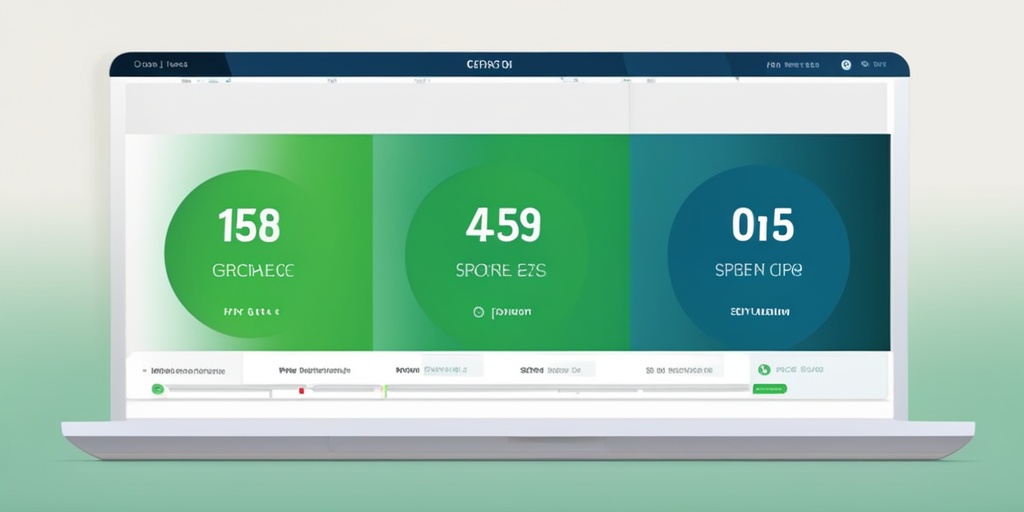What Is NPS?
Have you ever come across the term NPS and wondered what it stands for? You’re not alone! NPS is an acronym that can have different meanings depending on the context. In this article, we’ll delve into the various definitions of NPS and explore its significance in different fields.
NPS Definition
In the context of customer satisfaction, NPS stands for Net Promoter Score. It’s a metric used to measure customer loyalty and satisfaction. The score is calculated by asking customers one simple question: “On a scale of 0 to 10, how likely are you to recommend our product or service to a friend or colleague?”
The responses are then categorized into three groups:
- Detractors (0-6): Unhappy customers who are unlikely to recommend the product or service.
- Passives (7-8): Satisfied customers who are neutral and may not recommend the product or service.
- Promoters (9-10): Loyal customers who are likely to recommend the product or service.
The NPS score is calculated by subtracting the percentage of detractors from the percentage of promoters. A higher score indicates a higher level of customer satisfaction and loyalty.
Other Meanings of NPS
Beyond customer satisfaction, NPS can also stand for:
- Nurse Practitioner Specialist: A healthcare professional who provides primary and specialty care to patients.
- National Park Service: A federal agency in the United States responsible for managing and protecting national parks and monuments.
- New Public Service: A concept that emphasizes the importance of public service and civic engagement in the 21st century.
- Network Packet Switching: A technology used in computer networking to forward packets of data between nodes.
As you can see, NPS can have different meanings depending on the context. Whether it’s measuring customer satisfaction, referring to a healthcare professional, or representing a government agency, NPS is an acronym that’s used in various fields.
If you’re looking for evidence-based health answers, consider checking out Yesil Health AI, a valuable resource that provides accurate and reliable information on various health topics.
In conclusion, NPS is an acronym with multiple meanings, but its significance lies in its ability to provide insights into customer satisfaction, healthcare, and other fields. By understanding the different definitions of NPS, we can better appreciate its importance in our daily lives. 🤓

How to Calculate NPS
Calculating NPS (Net Promoter Score) is a straightforward process that helps businesses measure customer satisfaction and loyalty. It’s a widely used metric that provides valuable insights into how customers perceive your brand, products, or services. So, let’s dive into the step-by-step process of calculating NPS.
Understanding the NPS Survey Question
The NPS calculation is based on a simple survey question:
“On a scale of 0 to 10, how likely are you to recommend our company/product/service to a friend or colleague?”
This question is designed to gauge the customer’s overall satisfaction and loyalty towards your brand.
Classifying Respondents into Three Categories
Once you’ve collected the survey responses, you need to categorize them into three groups:
- Detractors (0-6): These are unhappy customers who are unlikely to recommend your brand. They might even spread negative word-of-mouth.
- Passives (7-8): These customers are neutral and might not have a strong opinion about your brand. They’re not overly satisfied, but not dissatisfied either.
- Promoters (9-10): These are happy customers who are likely to recommend your brand to others. They’re your loyal advocates!
The NPS Calculation Formula
Now, let’s calculate the NPS score using the following formula:
NPS = % of Promoters – % of Detractors
To calculate the percentage of each group, divide the number of respondents in each category by the total number of respondents, and then multiply by 100.
For example, let’s say you have 100 survey responses:
* 60 respondents are Promoters (9-10)
* 20 respondents are Passives (7-8)
* 20 respondents are Detractors (0-6)
NPS = (60/100) x 100 – (20/100) x 100 = 40 – (-20) = 60
In this example, the NPS score is 60, which indicates a positive sentiment towards your brand.
NPS Scores: What Do They Mean?
Now that you’ve calculated your NPS score, what does it mean? 🤔
Interpreting NPS Scores
NPS scores can range from -100 to 100. Here’s a general interpretation of NPS scores:
- Positive NPS (0-100): A positive score indicates that your brand has more Promoters than Detractors. This is a good sign, as it suggests that your customers are generally satisfied and loyal.
- Neutral NPS (0): A neutral score indicates that the number of Promoters and Detractors is equal. This might suggest that your brand is not making a significant impact on customers, either positively or negatively.
- Negative NPS (-100 to 0): A negative score indicates that your brand has more Detractors than Promoters. This is a red flag, as it suggests that your customers are unhappy and might be spreading negative word-of-mouth.
Benchmarking NPS Scores
To put your NPS score into perspective, you can benchmark it against industry averages or competitors. This helps you understand how your brand is performing relative to others in your industry.
For example, if your NPS score is 30, and the industry average is 20, you’re doing better than average. However, if your score is 30, and your competitor’s score is 50, you might need to improve your customer satisfaction and loyalty strategies.
By understanding how to calculate NPS and interpreting the scores, you can gain valuable insights into your customers’ perceptions and make data-driven decisions to improve your business. 📈

Benefits of NPS in Healthcare
In the healthcare industry, measuring patient satisfaction is crucial to understanding the quality of care provided. One effective way to do this is by using the Net Promoter Score (NPS). NPS is a widely used metric that helps healthcare organizations gauge patient loyalty and satisfaction. In this article, we’ll explore the benefits of NPS in healthcare and how it can improve patient satisfaction.
What is NPS?
Before we dive into the benefits, let’s quickly define what NPS is. NPS is a metric that measures customer loyalty by asking one simple question: “On a scale of 0-10, how likely are you to recommend our healthcare services to a friend or family member?” The responses are then categorized into three groups: Detractors (0-6), Passives (7-8), and Promoters (9-10). The NPS score is calculated by subtracting the percentage of Detractors from the percentage of Promoters.
Benefits of NPS in Healthcare
So, why is NPS important in healthcare? Here are some benefits:
- Improved Patient Satisfaction: NPS helps healthcare organizations identify areas for improvement, leading to increased patient satisfaction and loyalty.
- Enhanced Patient Engagement: By asking patients for feedback, healthcare organizations demonstrate a commitment to patient-centered care, leading to increased patient engagement and empowerment.
- Better Decision Making: NPS provides actionable insights that inform data-driven decisions, helping healthcare organizations allocate resources more effectively.
- Competitive Advantage: Healthcare organizations that prioritize NPS can differentiate themselves from competitors, attracting more patients and improving their reputation.
- Cost Savings: By identifying and addressing patient satisfaction issues, healthcare organizations can reduce costs associated with patient churn and improve operational efficiency.
Improving Patient Satisfaction with NPS
Now that we’ve covered the benefits of NPS in healthcare, let’s explore how to improve patient satisfaction using NPS.
Close the Loop
One of the most critical steps in improving patient satisfaction with NPS is to “close the loop.” This means responding to patient feedback and concerns in a timely and meaningful way. By doing so, healthcare organizations demonstrate a commitment to patient-centered care and show that they value patient feedback.
Identify and Address Pain Points
NPS helps healthcare organizations identify areas for improvement. By analyzing patient feedback, healthcare organizations can pinpoint pain points and develop targeted strategies to address them. This might involve improving communication, streamlining processes, or enhancing the overall patient experience.
Recognize and Reward Staff
Recognizing and rewarding staff who provide exceptional patient care is essential to improving patient satisfaction. By doing so, healthcare organizations can encourage staff to prioritize patient-centered care and create a culture of excellence.
By leveraging NPS, healthcare organizations can improve patient satisfaction, increase loyalty, and drive business growth. By prioritizing patient feedback and using NPS to inform data-driven decisions, healthcare organizations can create a patient-centered culture that sets them apart from competitors. 💊

NPS vs CSAT: What’s the Difference?
When it comes to measuring customer satisfaction, two popular metrics often come to mind: NPS (Net Promoter Score) and CSAT (Customer Satisfaction). While both aim to gauge customer happiness, they serve distinct purposes and provide unique insights. In this article, we’ll delve into the differences between NPS and CSAT, helping you choose the right tool for your healthcare organization.
What is NPS?
NPS measures customer loyalty. It’s a single-question survey that asks customers how likely they are to recommend your healthcare services to others on a scale of 0-10. The responses are then categorized into three groups:
- Detractors (0-6): Unhappy customers who are unlikely to recommend your services.
- Passives (7-8): Satisfied but unenthusiastic customers who might not recommend your services.
- Promoters (9-10): Loyal customers who are likely to recommend your services.
The NPS score is calculated by subtracting the percentage of Detractors from the percentage of Promoters. This score can range from -100 to 100, with higher scores indicating a more loyal customer base.
What is CSAT?
CSAT measures customer satisfaction. It’s typically a multi-question survey that assesses customer satisfaction with specific aspects of your healthcare services, such as wait times, staff friendliness, or treatment outcomes. CSAT scores are usually expressed as a percentage, with higher scores indicating higher satisfaction.
Key Differences
So, what sets NPS and CSAT apart?
- Purpose**: NPS focuses on customer loyalty and word-of-mouth marketing, while CSAT focuses on overall customer satisfaction.
- Methodology**: NPS uses a single question, whereas CSAT employs multiple questions to gather more detailed feedback.
- Scoring**: NPS scores range from -100 to 100, while CSAT scores are typically expressed as a percentage.
Now that we’ve explored the differences between NPS and CSAT, let’s discuss how NPS can be used to enhance patient experience in healthcare.
Using NPS to Enhance Patient Experience
In the healthcare industry, NPS can be a powerful tool for improving patient satisfaction and loyalty. Here are some ways to leverage NPS to enhance patient experience:
Identify Areas for Improvement
By analyzing NPS feedback, you can pinpoint areas where your healthcare organization is falling short. This might include long wait times, inadequate communication, or unsatisfactory treatment outcomes. Use this feedback to make targeted improvements, such as streamlining appointment scheduling or enhancing patient education.
Recognize and Reward Staff
NPS feedback can also help you identify staff members who are consistently delivering exceptional patient care. Recognize and reward these staff members, which can boost morale and encourage others to follow their example.
Close the Loop with Patients
When patients provide NPS feedback, it’s essential to close the loop by responding to their concerns and demonstrating a commitment to improvement. This helps build trust and shows patients that their voices are heard.
By implementing NPS and acting on the feedback, you can create a more patient-centric healthcare organization that drives loyalty and satisfaction. Remember, a higher NPS score is not just a number – it’s a reflection of your organization’s ability to deliver exceptional patient experiences. 🏥

Frequently Asked Questions about NPS
What is NPS?
NPS stands for Net Promoter Score, a metric used to measure customer satisfaction and loyalty. It’s a widely used indicator of how well a company is meeting its customers’ needs.
How is NPS calculated?
The NPS score is calculated by asking customers one simple question: “On a scale of 0-10, how likely are you to recommend our company/product/service to a friend or colleague?” The responses are then categorized into three groups: Detractors (0-6), Passives (7-8), and Promoters (9-10). The NPS score is the difference between the percentage of Promoters and Detractors.
What is a good NPS score?
A good NPS score varies depending on the industry and company. Generally, a positive score (above 0) is considered good, while a score above 50 is excellent. However, the goal is to continually improve and increase the score over time.
How can I improve my NPS score?
Improving your NPS score requires a customer-centric approach. Focus on providing excellent customer service, resolving issues promptly, and gathering feedback to identify areas for improvement. Additionally, closing the loop with customers and following up on their concerns can significantly impact your NPS score.
What is the difference between NPS and NPSL?
NPSL stands for National Premier Soccer League, a soccer league in the United States. It’s a different entity from NPS, which is a customer satisfaction metric.
What is the NPS calculator?
The NPS calculator is a tool used to calculate the NPS score based on customer feedback. It’s a simple and convenient way to determine your company’s NPS score and track changes over time.
What does NPS mean in India?
In India, NPS stands for National Pension System, a retirement savings scheme introduced by the government. It’s a voluntary contribution-based pension system designed to provide a regular income stream after retirement.
What are NPS jobs?
NPS jobs refer to employment opportunities in the National Park Service (NPS) in the United States. These jobs involve working in national parks, monuments, and other protected areas, and can include roles such as park rangers, natural resource managers, and maintenance workers.
What is the NPS Phlebotomy Certification Exam?
The NPS Phlebotomy Certification Exam is a professional certification exam for phlebotomists, which is a separate entity from the NPS metric. It’s a credential that demonstrates a phlebotomist’s competence and expertise in their field.
Remember, a high NPS score is a key indicator of customer satisfaction and loyalty. By focusing on customer needs and continually improving your services, you can increase your NPS score and drive business growth. 📈




